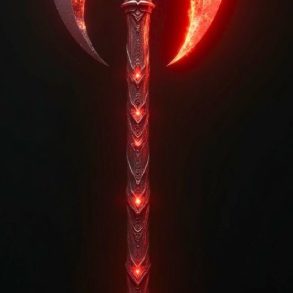This is not a critique, it is an overview of the journey of the Yorùbá theatrical industry, from the Alarinjo Travelling Theatre era to the current domination of cinema screens and streaming platforms.
Just like the late Sikiru Ayinde Barrister did a generation later to ajisari genre by taking a purely religious act to the general public, was also what late Herbert Ogunde did a generation earlier, by taking an operatic interpretation of biblical tales limited to Church events and took it to the public domain.
Before this, the ultimate platform for communal entertainment were mainly the egungun festivals in a general sense.
Of course, there were other variants, like eyo , igunnuko, agemo, etc, which were usually the accumulation of week long festivities to mark one important event or the other.
Because the Yorùbá traditional calendar consists of a 4-day week and a thirteen month year, cumulating in the Jaguna oloyin festivities, which is now appropriated by other religions to describe their own holy days, i. e. Jimoh oloyin and Sunday Oloyin. The calendar guarantees quality entertainment all year round from the adherents of the Orishas, like the Sàngó, Ògún, Oya and Ọṣun worshippers.
Looking back, it is obvious that the Ogunde Travelling Theatre had more in line with circuses coming to town vibe than a religious experience. His most popular plays, which he later adopted for cinema, were exquisite spectacle of total entertainment. There were songs, dances, comedy, poetry and a feel good resolution at the end of the performance.
Because no ethnicity does the domestication of external influences than the Yorùbá, what was essentially a novelty soon became an essential part of the mainstream, as towns and villages eagerly looked forward to these travelling troupes as part of their annual cultural calendar.
With the incarceration of Chief Obafemi Awolowo in the early 60s, Ogunde’s plays became more political, which then created a lacuna for some lighter acts to emerge, especially the comedic ones like Baba Sala, cultural ones like Duro Ladipo, and the young turks like Ade Love and Ishow pepper.
When Ola Balogun shot the first indigenous movie in Yoruba, Ajani Ogun, featuring some of the practitioners of the Alarinjo theatre, they fell in love with the craft, and moved en masse to the cinema.
Again, the Yoruba, who, as the late Alhaji Azeez Arisekola Alao once told me, ‘hold the Charter from heaven on how to enjoy life’ again domesticated this concept, and made it their own.
The bubble burst however, after pirated versions of some of the classics produced during that era came out, effectively killing any incentive to produce any more block busters by the old masters, which led to some of them dying in relative penury.
When Muyideen Alade Aromire, a young Lagos prince came back from a short stint in Germany, he met an heritage in distress.
Unable to raise the kind of funds to shoot on celluloid, he decided to use the conventional VHS outlet, whose ownership was then an emerging status symbol, but with almost an exclusive foreign content, mainly Indian, Chinese and American movies.
His gamble paid off, and Nollywood was born.
In fact, it took years for the old veterans of the cinematic era to embrace the new reality. A popular star of that era once described it as popcorn cinema, and vowed never to appear in one.
Being that as it may, the relatively cheap production cost and easy accessibility created a new class of video makers. From the romantic skits of Yemi my lover to the mystical tropes of Fadeyi Oloro.
However, when trained Cinematographers and their ilk, like Tade Ogidan , Tunde Kelani and Dudu Baba joined the fray, producing high quality visual feasts and compelling cultural themed stories, the Yoruba cinema, like they’ve done in the past, domesticated that reality.
But after years of battling piracy, succumbing to marketers tyranny of being told what stories to tell and which actors to use, fighting to get an increasing share in a decreasing market, there now appears to be light at the end of the tunnel.
Apart from the direct inheritors like Kunle Afolayan and Femi Adebayo, there is now a crop of brilliant film makers like Lekan Wasiudeen, Biyi Bandele, Toyin Abrahams, Odunlade Ademola et al, who now dominate the. Cinema screens and the streaming platforms, especially YouTube, Netflix, and Prime Video, not to mention dedicated indigenous streaming services like IROKOtv and the Telecoms service providers.
While it now appears that the industry has come full circle, what no one can say for certain is that this particular period in history is the best for the Yoruba entertainment industry, with our brothers and sisters dominating the music ,movies and the literal aspects, but it is certainly a good time to be alive if you are a Yoruba who loves his culture, and is proud how it’s being projected to the world.
I thank you for listening.
A paper delivered via zoom by Aakogun Gani Kayode Balogun jr, The Osi Aare ona Kakanfo of Yorùbáland, to the Yorùbá Cultural Collective of Indianapolis, on the anniversary of Isese day, yesterday.





